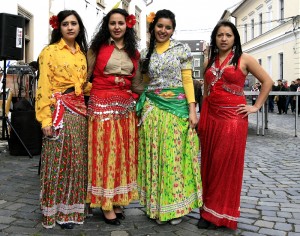You come across these people in many countries; they do not have a national territory or their own government. Legends describe their arrival from Egypt, but these are only fairytales. They were called Wanderers, Vagrants, Bohemians, Travellers, Gypsies, Sinti, Zott, Luri or Nawar. Their origins have been a subject of controversy throughout history. The gypsies are not a people with a written or oral tradition. So where did they come from? New discoveries shed light on their origin which is India, where they spread throughout Europe and Middle East circa 1000 AD. Gypsy peoples come from two migrations, one of Rajasthan, which are now considered Romanians and Albanians; the other one is the Pakistan Sinti Gypsies and Spaniard.
DNA research is also said to have established the European gypsies’ genes to Northern India. It is believed that the various invasions in India led to the exodus of this tribe in three waves which led to the spread of the tribe across Persia, Turkey, Greece, Europe, Spain, Russia, Finland, Egypt and Morocco.
 Facing discrimination made gypsies united and they focused more on family life. The relationship between children and their parents is extremely strong in gypsy communities.
Facing discrimination made gypsies united and they focused more on family life. The relationship between children and their parents is extremely strong in gypsy communities.
In their nomadic life, gypsies turned to skilled blacksmiths and traders, but also talented artists, while many women pretend having supernatural powers to make a living.
The gypsies prefer being called Romany. They have retained the Romany language, which finds its roots in Sanskrit.
There are an estimated 12 million Gypsies living in the world. Most of them (8-10 million) live in Europe, making them the largest ethnic minority group. Very few are still nomads and many got rich, but in many areas, gypsies are still the lowest part of the society.





















